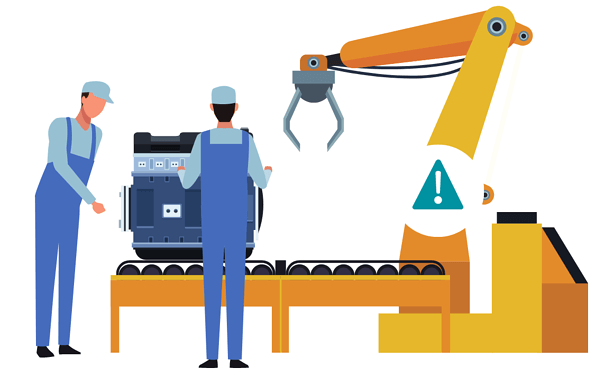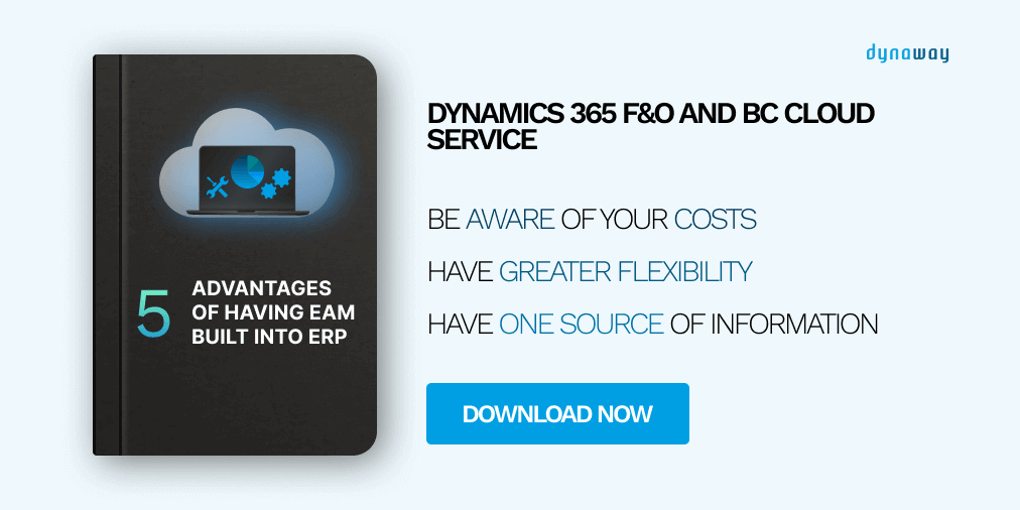A computerized maintenance management system (CMMS) can certainly be pivotal to any facilities management strategy, helping you ensure an optimal maintenance posture for your enterprise's machinery, equipment and other assets. But it's critical to understand a few things before diving right into looking at vendors. For one, you want to become comprehensively informed about CMMS software and what it can do, while also taking the time to examine tech tools that may be beneficial when used in tandem, such as enterprise asset management (EAM) platforms.

CMMS software: The basics
The essential function of a CMMS platform is to facilitate the processes that govern maintenance operations throughout your organization using one centralized interface, while allowing comprehensive visibility into the status of all key assets. Utilized properly, it will notably improve the uptime, functional quality and life span of your machinery, vehicle fleets, infrastructure, communications tech and much more.
According to American Machinist, the earliest CMMS platform would've been seen in the mid-1960s. These tools, then brand new, would likely only be found at the headquarters of the marquee manufacturers from that era: Dow, Du Pont, General Motors, etc. After all, those were the only firms in the sector that had the computer infrastructure to keep a CMMS or sophisticated inventory management system running. The average early CMMS was quite rudimentary, relying on punched cards and gargantuan, appliance-sized mainframes. Fortunately, within a few decades, computers grew much smaller and more powerful. Once the internet had proliferated across the globe, it became viable for midsize and smaller manufacturers and industrial firms to use the technology for comprehensive oversight of their maintenance work. These days, so much of business (across all sectors) is done in the cloud and on mobile devices, so it's no surprise that many key CMMS tools are increasingly based in the cloud rather than on-premises.
The importance of CMMS for maintenance and oversight
Given how complex it can be to maintain tight control over labyrinthine industrial production processes even with the modern tools we have at our disposal, it's just as mind-boggling to try and imagine the world of the factory floor without computerized maintenance management software and the hardware that keeps it aloft. Powered by leading-edge databases, these systems serve a multitude of vital purposes, including the following:
- Asset management and registry: You can find just about all the critical equipment data you'll need on every piece of your inventory in your CMMS system. This includes asset location and position, classifying information (make, model, serial number, etc.), performance statistics, downtime vs uptime comparisons, asset documentation (operating manuals, video aids, safety sheets and so on) and details regarding any sensors or internet-of-things connections the piece may have.
- Materials and inventory management: Keeping track of key material needs and spare parts can become complicated, but it's absolutely necessary: Failing to stay on top of these things can quickly lead to material shortages or parts shortfalls, and both of those, in turn, can create downtime and jeopardize asset maintenance, not to mention the organization's bottom line.
- Preventive maintenance: Facilitating a maintenance process that is based on carefully managed ongoing oversight is one of the two most important functions of any CMMS software tool. Preventive maintenance serves as a direct rejoinder to the often haphazard and disruptive practice of reactive maintenance, by allowing you to schedule and create automated maintenance task work orders, even for multiple assets all at once. (Because much of the work is done in advance of failure, this can sometimes be called predictive maintenance.) It helps reduce downtime and can cut down on the overall maintenance cost of a facility over time.
- Work order management: This represents the other most critical purpose of any CMMS solution. Work orders created and overseen in this maintenance software system are richly detailed and also organized by priority. The latter is especially helpful for facilities managers looking to allocate personnel and resources more efficiently.
- Recording and reporting: All of the maintenance data warehoused within a CMMS can easily be turned into reports on any number of categories essential for assessing the quality of maintenance operations and overall asset performance: labor and materials costs, vendor assessments, material usage, asset availability and more.
-1-1.png?width=697&name=Social%20Media%20(1)-1-1.png)
Adopting an on-premise or cloud-based CMMS platform can help an organization realize numerous benefits across all of its facilities. Below are some of the most important:
- Reduced downtime: Any and all delays in a production process — an hour or two; even just 30 minutes — can be detrimental to a business's production goals. (If a maintenance team has to unexpectedly shut down an asset to repair it, the job is often taking longer than a few hours, because the machine probably hasn't been examined in months.) Using CMMS software to establish a preventive maintenance framework helps significantly minimize downtime.
- Longer-lasting equipment: Along similar lines, if you have a tight maintenance operation in place that you've facilitated via CMMS software, you'll be regularly performing upkeep and repair tasks that improve the chances of any given piece of equipment having a longer life span (and contributing more value to the company) than you would otherwise expect. Combined with a similarly preventive fleet maintenance strategy for your organization's vehicles, this can seriously extend the viability of your tangible asset inventory. Along with reduced downtime, longer equipment life spans help save you money.
- Increased visibility: Any manufacturer or industrial business, even a fairly small one, has plenty of machine, device and vehicle inventory under its control. Establishing reliable and wide-ranging visibility is critical to avoid numerous mistakes. The asset tracking capabilities inherent to CMMS software mitigate this risk. A strong asset and inventory management platform also allows visibility into workflows and helps establish a better maintenance schedule, so that the maintenance department can keep track of a given asset's status in real-time and assign all necessary preventive maintenance tasks.
- Streamlining and efficiency: Work order management becomes much less taxing when all parties involved in a given order can use CMMS software to keep operations coordinated. Such tools ensure that your maintenance manager knows just as much as anyone on the ground directly engaged in maintenance activity.
- Regulatory compliance: Whatever burden maintenance management might involve, it's nothing compared to the weight of unpleasantness brought on by failing a local, state or federal worksite audit. The facility maintenance and equipment inventory data your CMMS software contains can be used to create detailed reports that tell regulators everything they need to know and then some.
- Health and safety: While critical for compliance, health and safety must also be upheld in the interest of simple decency and respect for your workers. The oversight that CMMS software allows gives you room to analyze asset failures and uncover overarching safety hazards that must be addressed.

Finding the CMMS for your asset management needs
You cannot simply choose the first CMMS software that shows up in an internet search and commit your organization to its implementation. There must be a concrete game plan in place, one that you are confident is within the capabilities of the tool from your CMMS provider of choice.
Start by considering your goals: Do you have specific machines (or categories thereof) you want to focus on in terms of maintenance, or are your concerns more general?
You must also take the size and nature of your business into account: For example, a growing energy company will need a highly scalable CMMS known for helping users navigate complex compliance and safety requirements, whereas an electronic component manufacturer might be laser-focused on inventory management. Then you need to think about costs — the price of implementation, of course, but also the cost of bringing on consultants if you lack qualified IT to handle training and the hours you and your technicians spend using the system. Look at several CMMS options, and if any of them allow an evaluation period, take advantage of it.
The difference between CMMS and EAM software (and how they can work together)
Last but not least, it's critical to identify a key point of confusion that sometimes arises: CMMS software has functions similar to an EAM system, but the two aren't identical.
CMMS software is strictly maintenance-focused. By contrast, the latter's full name is "enterprise asset management" for a reason: EAM focuses on how maintenance care and upkeep operations factor into broader aspects of the business, including procurement, risk assessment, process management and financial analysis.
Because of this, EAM can improve the efficacy of a CMMS by facilitating greater cooperation across departments. Dynaway has optimized our EAM platform for seamless integration with ERP and other key systems within Microsoft Dynamics. Ultimately, this helps galvanize efficiency across your entire organization.
To learn more about what Dynaway can offer your business either alongside CMMS software or an a la carte integration with Dynamics, get in touch with us today!


